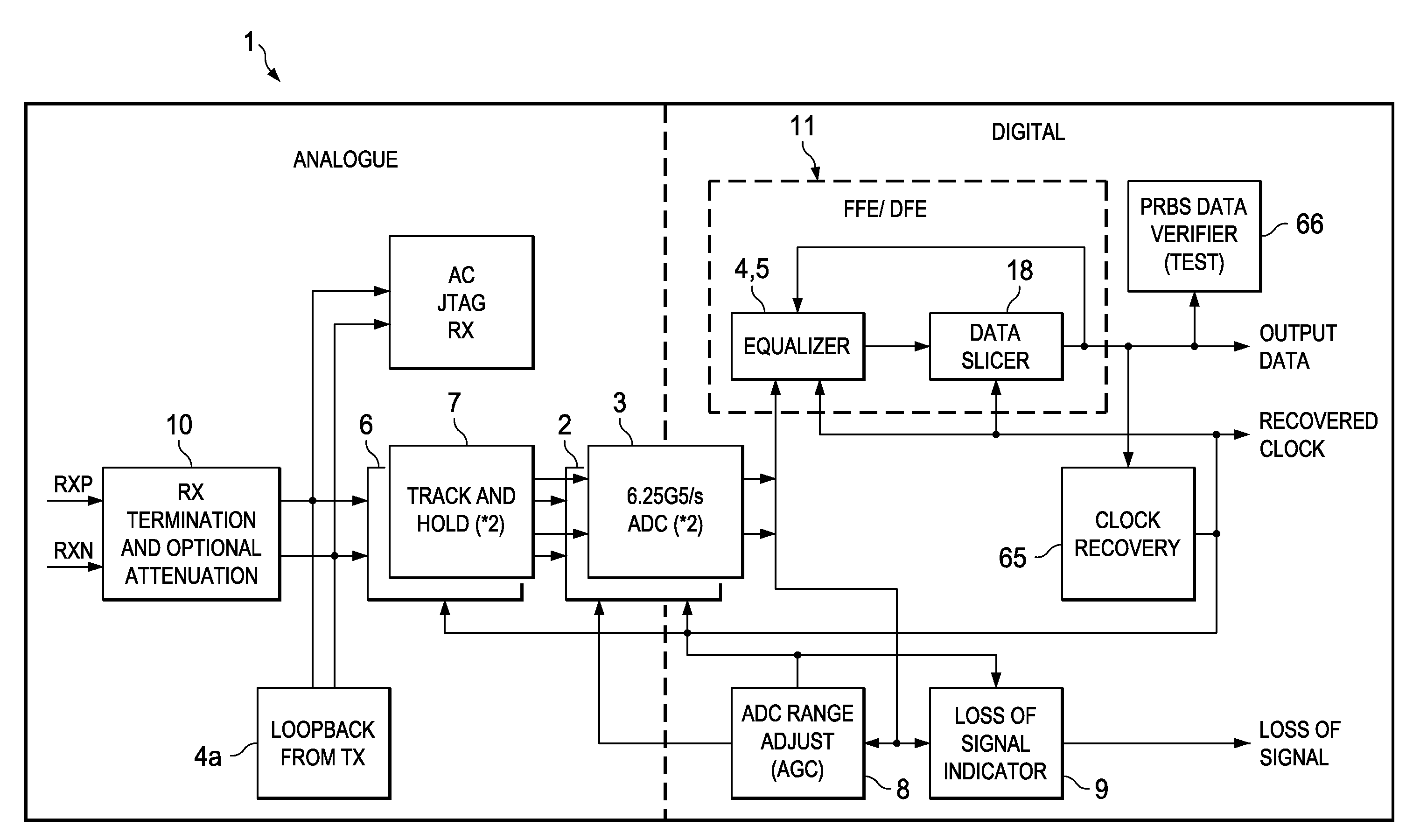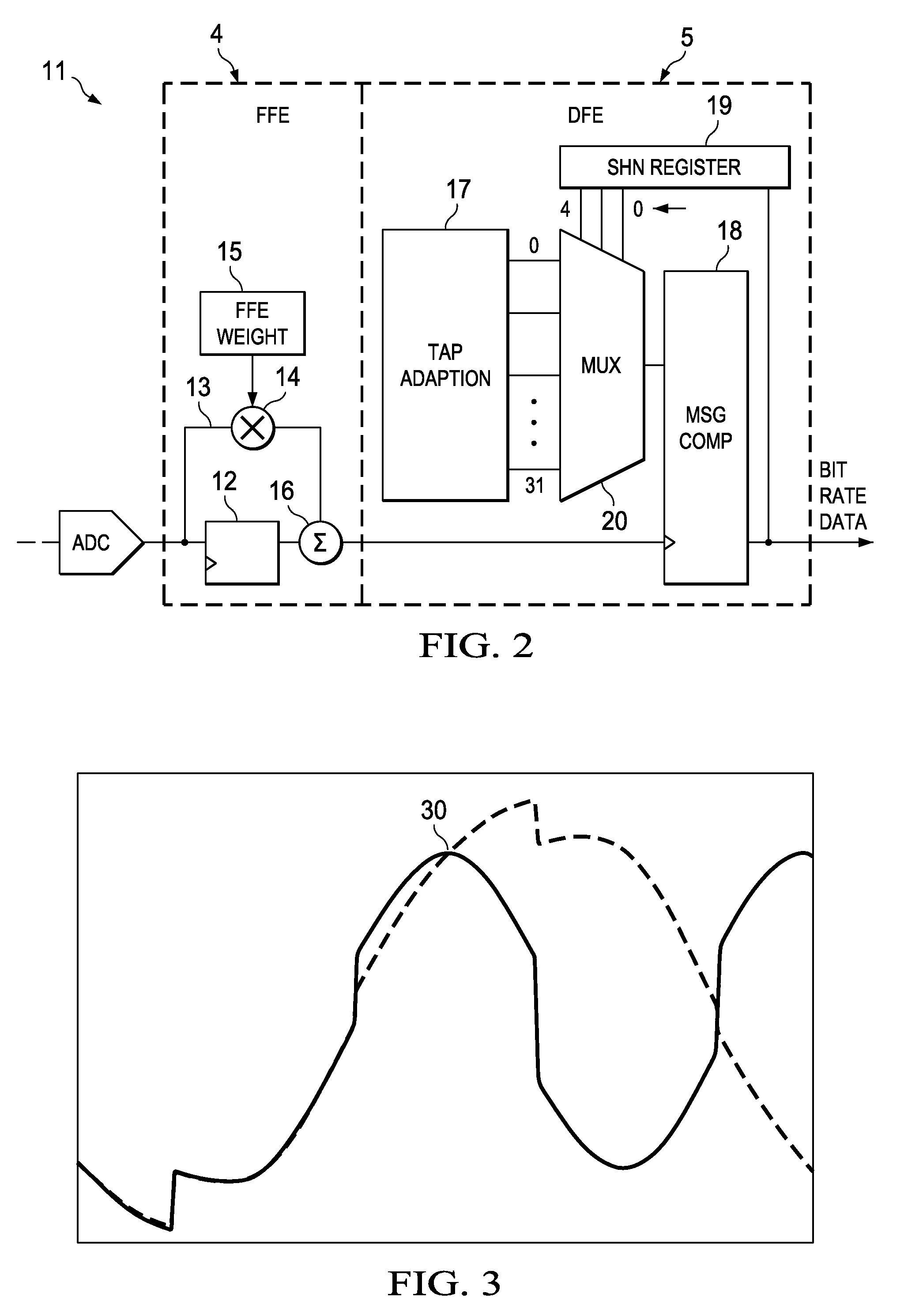Receiver Circuit
a receiver circuit and circuit technology, applied in the field of receiver circuits, can solve the problems of not being able to detect the phase of a clock signal, the algorithm of bang-bang cdr is also unable to detect the phase of data, and the timing of the clock is not good for high-speed data transfer systems. achieve the effect of high clock ra
- Summary
- Abstract
- Description
- Claims
- Application Information
AI Technical Summary
Benefits of technology
Problems solved by technology
Method used
Image
Examples
Embodiment Construction
[0031]A key challenge facing designers of high-bandwidth systems such as data-routers and super-computers is the requirement to transfer large amounts of data between ICs—either on the same circuit board or between boards. This data transmission application is called Serialisation-Deserialisation or “SerDes” for short. The present invention is useful in SerDes circuit and indeed was developed for that application. Nonetheless the invention may be used in other applications.
[0032]Analysis of typical backplane channel attenuation (which is around −24 dB) and package losses (−1 to −2 dB) in the presence of crosstalk predict that an un-equalized transceiver provides inadequate performance and that decision feedback equalization (DFE) is needed to achieve error rates of less than 10−17.
[0033]Traditional decision-feedback equalization (DFE) methods for SerDes receivers rely on either modifying, in analogue, the input signal based on the data history [“A 6.25 Gb / s Binary Adaptive DFE with ...
PUM
 Login to View More
Login to View More Abstract
Description
Claims
Application Information
 Login to View More
Login to View More - R&D
- Intellectual Property
- Life Sciences
- Materials
- Tech Scout
- Unparalleled Data Quality
- Higher Quality Content
- 60% Fewer Hallucinations
Browse by: Latest US Patents, China's latest patents, Technical Efficacy Thesaurus, Application Domain, Technology Topic, Popular Technical Reports.
© 2025 PatSnap. All rights reserved.Legal|Privacy policy|Modern Slavery Act Transparency Statement|Sitemap|About US| Contact US: help@patsnap.com



